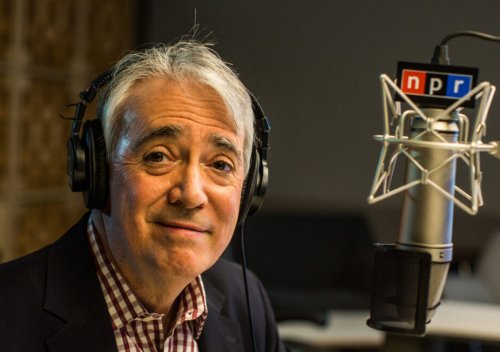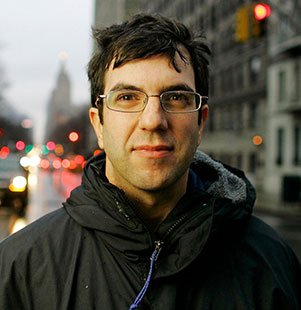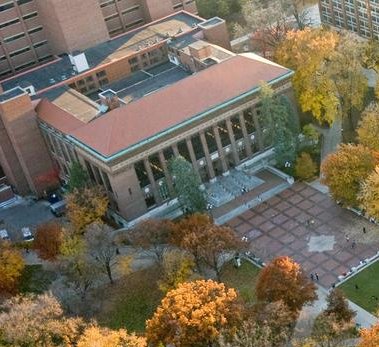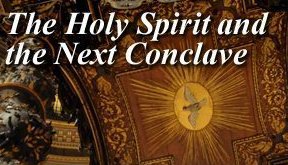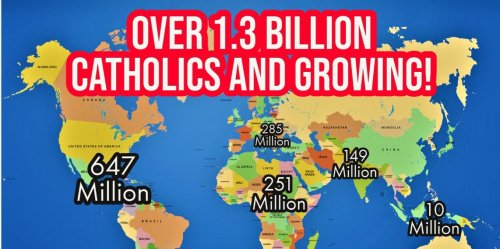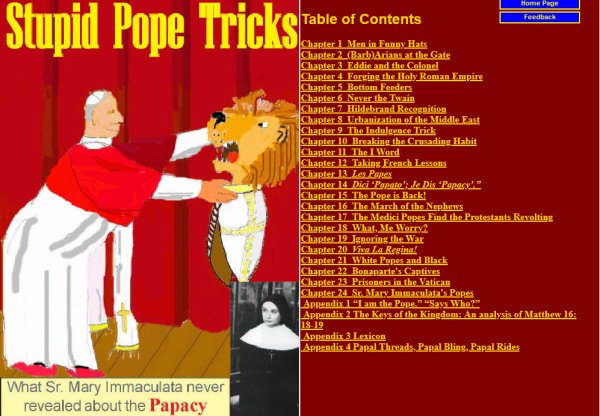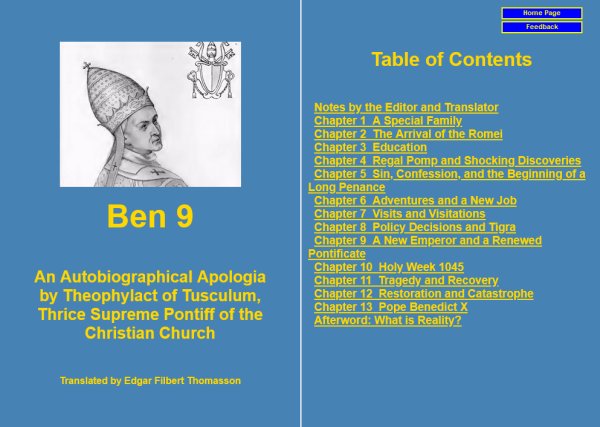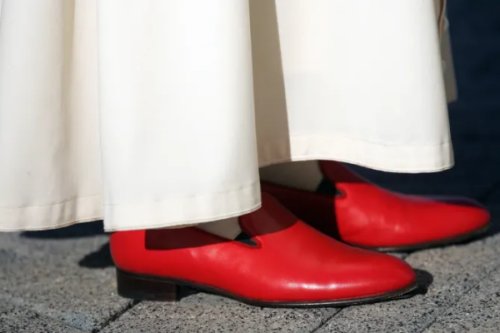Q&A about Trump as pope Continue reading
President Trump recently voiced his interest in becoming the next Supreme Pontiff. He even posted a picture of himself in papal garb. Since I know as much about the history of the papacy1 as just about anyone in the United States, I decided to write a blog entry that answers questions that people might have about the feasibility and details of a Trump pontificate.
Definition
Who is the pope? This is an easy one. The pope is—and has always been—the Bishop of Rome. He is also the ruler of the Papal State, the smallest country in the world, by virtue of a treaty signed by Pope Pius XI, Benito Mussolini, and others on February 11, 1929.
From the ninth century through 1870 the Papal States consisted of a band of land that stretched from Italy’s western coast all the way to the Adriatic Sea. The popes ruled that entire area even in the seventy years in the fourteenth century in which they resided in France.
So, the pope officially has three jobs—Bishop of Rome, monarch of the world’s smallest country, and Supreme Pontiff of the Christian Church2.
How many popes have there been? The first name on the official list is St. Peter the apostle. Francis was #266. However, only 264 men have been pope before the newly elected Leo XIV. Benedict IX, my favorite pope3, is on the list three times.
Men? I heard that there was a Pope Joan. Almost certainly not. The first stories of Pope Joan started appearing half a millennium after she supposedly had been elected pope. They are inconsistent with one another and contradicted by more reliable accounts.
Election
How is the pope elected? Since 1150 the popes have been elected by the Sacred College of Cardinals. Previously the rules were quite loose. Often the local clergy and other nobles voted for the new pope. Occasionally he was appointed by an emperor or other ruler. The method used to select most of the popes of the first few centuries is unknown. Since 1256 the elections have been held in a “conclave”, which means that they occurred in a locked room.
Up until the end of the nineteenth century powerful European monarchs were allowed to exercise unofficial veto power over the conclave. Even Hitler attempted this, but he was unable to prevent Pope Pius XII’s election.
A pope can change the rules for the next conclave. Pope John Paul II limited the right to vote to cardinals who were under 80 years old. That effectively eliminated almost everyone appointed by his predecessors.
Is the Holy Spirit involved? The cardinals pray that God (in the “person” of the Holy Spirit) will inspire them to select the best person as Supreme Pontiff. Since the beginning of the twentieth century the popes have been relatively competent and good-hearted. There have been crises, but they were not as serious as what faced the popes of previous centuries, and the Church adapted. No one considers most of the popes who lived from the dark ages through 1900 as saintly. Very few have been canonized.
How long does the election take? One was completed in a day. The longest conclave lasted for over two years.
Who appoints the cardinals? The pope, and there are no restrictions on the number of appointments. 133 participated in the election of Leo XIV.
What is the term of office for cardinals? No limit. Most died in office after many years. A few have been murdered, and a few have resigned.
Who is eligible for the election? In theory, anyone can be elected. However, every bishop, including the Bishop of Rome, must be ordained as a priest. President Trump, in my understanding, could be voted in as the pope, but he would then need to go through a number of ceremonies before he could sit on the Cathedra Petri. In the first place he would need to be baptized. Adult baptisms require classes to make sure that the convert understands the Church’s Creed. He would need to receive the Eucharist, and before that he would need to confess his sins (if any) and receive absolution from a priest. This could be problematic since, to my knowledge, he never has admitted a mistake or flaw of any kind, and the priest will demand both contrition and “a firm purpose of amendment”.
I don’t know if he would need to receive the sacrament of Confirmation. It entails a slap on the cheek by a bishop. He would definitely need to be ordained as a priest, a ceremony that requires a commitment to chastity and obedience to the clerical hierarchy.
Trump’s marriages should not be a problem They did not occur within the sacrament of matrimony and were therefore never sanctioned by the Church. He would be considered single.
If he had been married to Melania in the Church, it still might be all right. St Peter was married and, according to the Bible, had daughters. Pope Adrian II’s wife and daughter lived with him in the Lateran Palace. That setup may sound ideal for a situation comedy, but in fact both his wife and daughter were abducted and murdered. All of this happened in the ninth century, and it barely made the top ten list of bizarre happenings in the pontificates of that era.
As far as I know, the thirty-four felony convictions will not be held against him. Several popes had impressive rap sheets.
Powers
What would his powers be? Almost unlimited. He could appoint cardinals and other prelates. He could also direct the Church’s riches in any direction that he wanted. Pope John Paul II secretly sent tens of millions of dollars from the Vatican Bank to help finance Lech Wałęsa’s political campaign against the Communists.
The pope also has unrestricted use of the popemobile, but he does not have a sidekick, a papal utility belt, or any super powers.
Isn’t there anything special that only the pope could do? Well, yes. He could call a crusade. That was very popular in the first few centuries of the second millennium. In those days the nobility who had standing armies could be persuaded to fight the pope’s battles, and hoi polloi were responsive to the promise of indulgences that could be transferred to relatives. Hundreds of thousands of people undertook the long journey from Europe to the Levant, mostly on foot. A high percentage never made it back. It is hard to imagine how any pontiff could pull that off again.
I thought of another power. In the thirteenth century Pope Innocent III5, who called a few of those crusades, put the entire nation of England and Wales under interdict for six years. At the time Britain was a Christian, country, but the pope’s actions meant that none of its residents were allowed to receive any sacraments during that period. They were effectively damned. The tactic did not work as hoped; King John seized seized Church property and income.
I suppose that a pope could reinstate the inquisition, but that would require a great deal of p.r. work. The historical one was somewhat effective because the civil governments agreed to enforce the sentences of the inquisition’s tribunals.
What about infallibility? Since the First Vatican Council in 1869-71 the pope has been considered infallible when he makes official statements concerning faith and morals. That authority has been used very seldom. Pope Pius IX used it to confirm the doctrine of the “immaculate conception”, which asserts that Mary the mother of Jesus was born without Original Sin. Pope Pius X used it to confirm that Mary did not die; instead she was “assumed” into heaven while still alive. So, if archeologists ever claimed to find Mary’s bones, no Catholic could believe them. Pope John XXIII said that he would never use this authority, and he never did.
Restrictions
Would he need to live in Rome? Absolutely not. He could stay in Mar-a-Lago, the White House, or anywhere else. For seventy years the popes all lived in Avignon in the Provence region of France. None of them ever set foot in Italy.
Would he need to wear a cassock, a miter, and all that other stuff? I doubt it. Who would make him do it?
Would there be a conflict of interest with his presidential responsibilities? Is this a trick question? He could probably even work the crossed keys into the presidential seal.
Removal
How can the pope be removed from office? A few councils of bishops and other high-ranking clergy have successfully declared popes as illegitimate, but that approach has not been tried for many centuries. A few popes were also violently removed from office, but that has also not been attempted in recent centuries. Basically, it’s a lifetime gig, but the movie Godfather III insisted that John Paul I, who reigned for only thirty-three days, was assassinated.
1. I even addressed the subject in a very long book entitled Stupid Pope Tricks: What Sr. Mary Immaculata Never Revealed About the Papacy. It has never been published per se, but I have posted it here.
2. The Orthodox Church has not recognized this last role since the Great Schism of 1054. Of course the various protestant sects also call themselves Christians, but they do not recognize the pope’s religious authority.
3. I also wrote a first-person historical novel that featured Benedict IX. Ben 9 is posted here.
4. Adrian V is on the current list, but he died before being ordained a priest. I have never seen an explanation of this anomaly. He only lived 38 days after being consecrated in July of 1276.
5. As far as I know, Innocent III is the only pope with an action figure. I own one.














